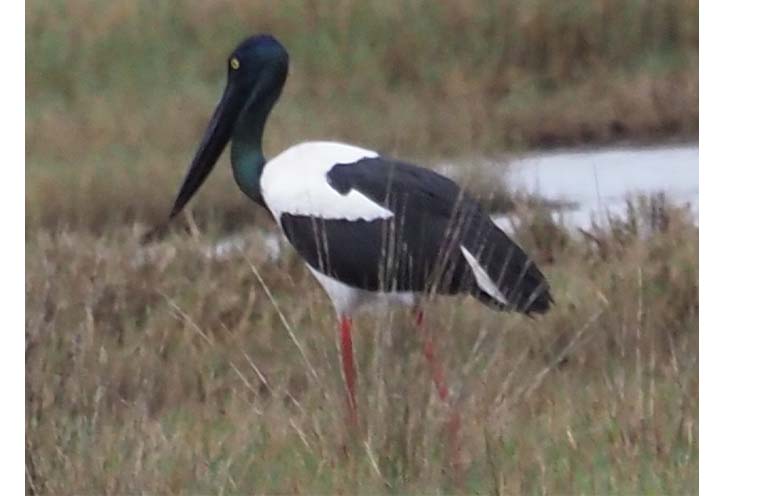
SINCE his early childhood, Allan Hudson has been captivated by birds.
From the age of eight or nine, he traveled across Australia and even ventured overseas to observe these fascinating creatures.
 Advertise with News of The Area today.
Advertise with News of The Area today.It’s worth it for your business.
Message us.
Phone us – (02) 4981 8882.
Email us – media@newsofthearea.com.au
However, it was a recent sighting of a seemingly out-of-place bird that left Allan puzzled.
The bird in question is the Black-necked Stork, also known as the Jabiru (Ephippiorhynchus asiaticus).
One of the largest storks, the Jabiru stands an impressive 130-150 centimetres (cm) tall, with a wingspan reaching up to 230cm.
It is easily recognized by its glossy, iridescent black neck and head, which contrasts with its primarily white body and bright red long legs.
What makes this sighting so significant is that the Jabiru is not commonly known to inhabit regions this far south.
They are typically found in the wetlands and floodplains of the Northern Territory, Western Australia, Queensland, and the coastal areas of northern New South Wales.
Mr Hudson first learned about the Jabiru’s presence in the area while overhearing a local whale watcher discussing the bird.
Intrigued, he approached the whale watcher and was directed to Lake Cathie.
Without hesitation, Mr. Hudson jumped into his car and headed to the area.
His efforts were quickly rewarded when he spotted a bird in the reeds, about 100-150 metres away.
Pulling out his camera, he zoomed in and confirmed his find; it was indeed a Jabiru.
This was not the only recent sighting.
Another Jabiru was spotted at a dam on a property in Sancrox, leaving onlookers equally surprised by the bird’s unexpected appearance in the region.
The Office of Environment and Heritage has noted that the Black-necked Stork is considered endangered in New South Wales.
They have also suggested that an increasing number of breeding records south of their usual range may indicate a potential shift in their habitat.
Environmental changes, such as climate shifts and habitat availability, could be encouraging these birds to explore and settle in new areas.
For Allan Hudson and other bird enthusiasts, these sightings are a rare and exciting opportunity to observe the majestic Jabiru in a new and unexpected environment.
As climate and environmental factors continue to evolve, who knows where else these magnificent birds might appear next.
By Luke HADFIELD
